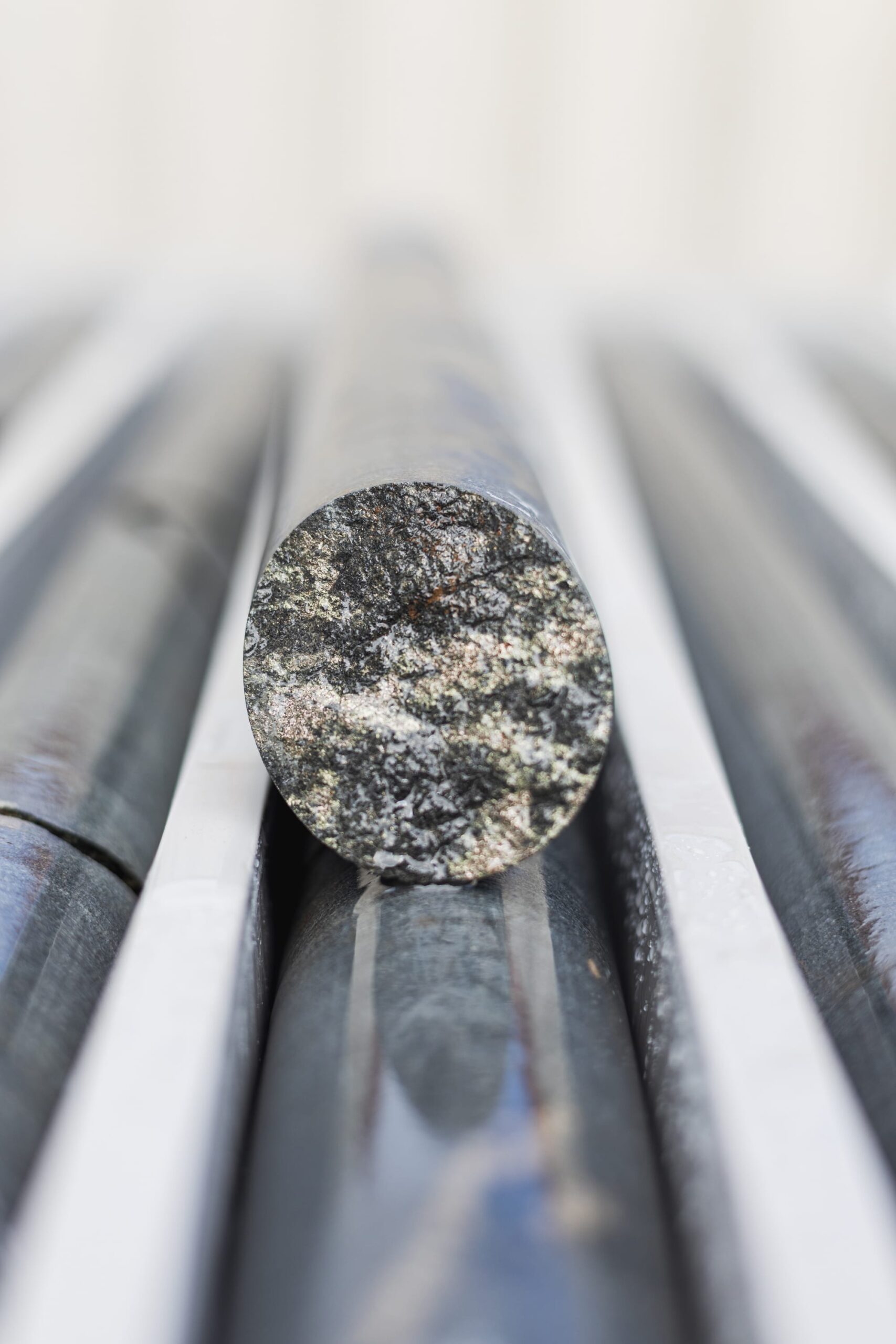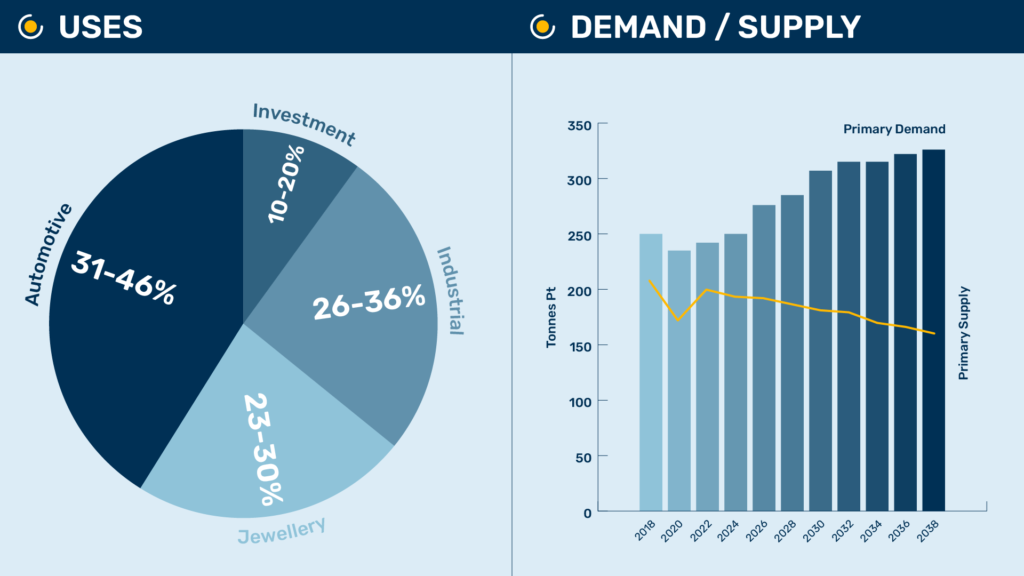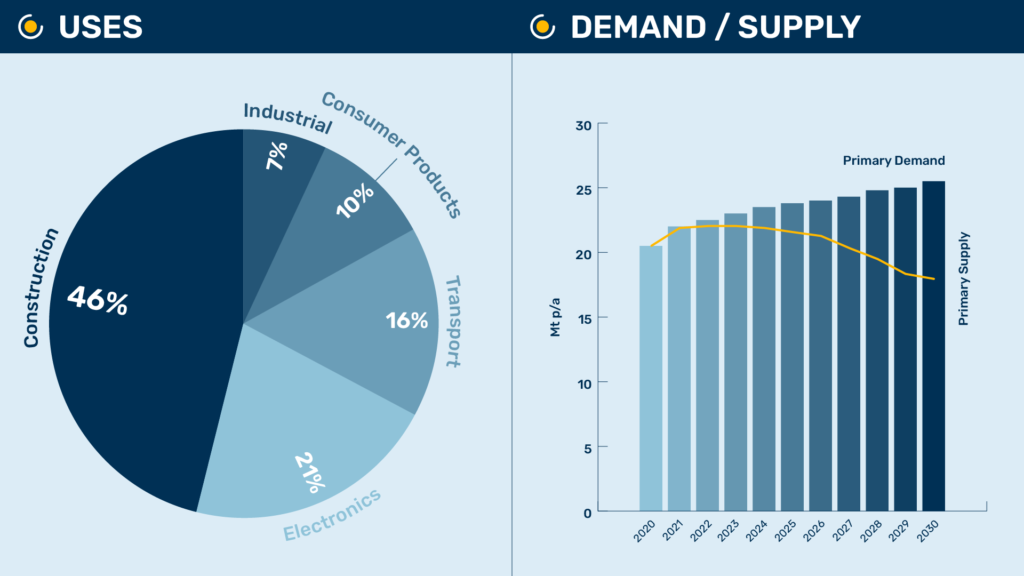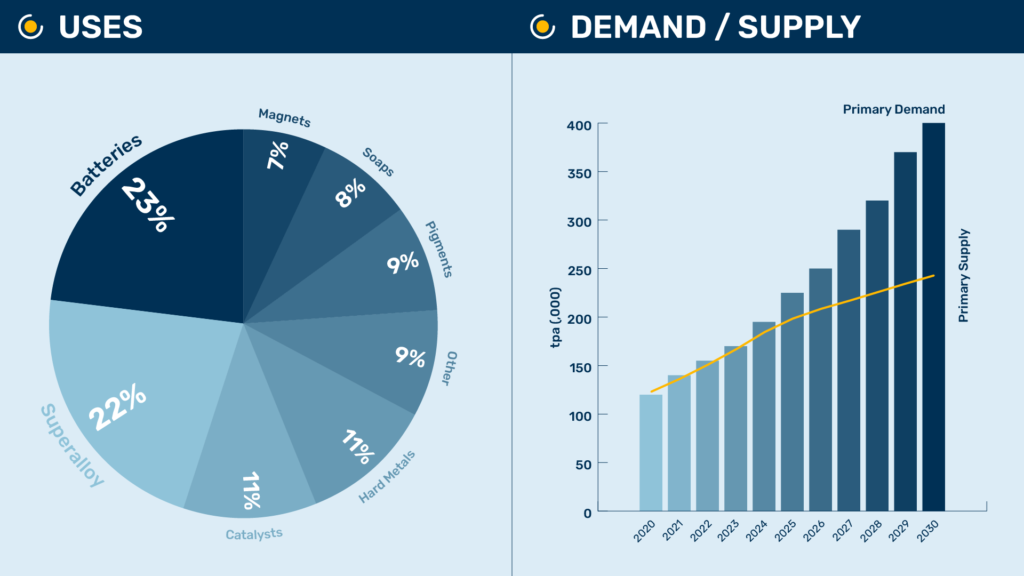
High-Demand Metals
Galileo Mining (ASX:GAL) is a mining exploration company with a strong focus on the discovery and exploration of high – demand metals, including palladium, platinum, nickel, copper, cobalt, and rhodium.
GAL is particularly dedicated to discovering nickel, platinum group minerals (PGE), copper, and cobalt mineral deposits in Western Australia. These metals play a critical role in supporting the advancement of low-carbon technologies, as they are essential components in the production of electric vehicles, renewable energy systems, and other sustainable solutions.
Palladium
A rare and lustrous silvery-white metal, palladium is one of the six platinum group metals and possesses strong catalytic activity. Russia and South Africa are the two largest palladium-producing countries in the world.
Uses: The metal is primarily used as a catalyst in the automotive sector, mainly in gasoline-powered on-road vehicles, and has displaced platinum in some parts of on-road diesel engine autocatalysts. The second main use of palladium is in electrical components, specifically in multi-layer ceramic capacitors (MLCCs), as conductive pastes and in electrical plating.
Demand / Supply: Global palladium market size is expected to grow to US$5.665 billion by the end of 2028 on the back of growing demand from chemical manufacturing factories for its highly chemical transformation properties as well as high demand from oil & gas industry for catalytic processes. Palladium is anticipated to be impacted by a lack of major investment in new supply. The supply shortfall is exacerbated by the Russia-Ukraine conflict with financial sanctions on Russia, which produces 25-30% of global supply, to continue disrupting exports and worsen supply shortage globally.

Sources: Johnson Mathey, WPIC Research and Business Research Insights
Platinum
Platinum is a dense, malleable, ductile, highly unreactive, silverish-white transition metal and is a member of the platinum group of elements. It is one of the least reactive metals and has remarkable resistance to corrosion, even at high temperatures. South Africa is the largest platinum-producing country in the world.
Uses: The metal is used in catalytic converters, laboratory equipment, electrical contacts and electrodes, platinum resistance thermometers, dentistry equipment, and jewellery.
Demand / Supply: Platinum shortage due to declining platinum production and increased demand, particularly from the industrial sector, according to the World Platinum Investment Council. Industrial demand, particularly in chemical and glass production in China while strong demand also continues in the auto sector as platinum becomes an increasingly common replacement for palladium in catalytic converters.

Sources: World Platinum Investment Council, US DOE 22 Feb 2022
Nickel
Nickel is a silvery-white metal that is used mainly to make stainless steel and other alloys stronger and better able to withstand extreme temperatures and corrosive environments. Indonesia followed by Australia produce the most nickel globally
Uses: About 69% of the nickel consumed in the Western World is used to make austenitic stainless steel. Another 11% is currently used in rechargeable batteries including li-ion batteries for EVs, delivering higher energy density and greater storage capacity at a lower cost
Demand / Supply: S&P Global Market Intelligence projected in 2022 that annual global copper demand will nearly double from 25 million to roughly 50 million tonnes by 2035. Forecasting for future growth, the supply and demand gap is likely to widen. Assuming mining output continues to grow at a rate of 2.69%annually, global output will reach a mere 31 million tonnes by 2035 – a shortfall of 19 million tonnes pa.

Sources: Norilsk Nickel, Zeb Nickel Corp
Copper
Copper is a soft, malleable, and ductile metal with very high thermal and electrical conductivity. Chile is the largest copper producer globally followed by Peru and the Democratic Republic of Congo.
Uses: Copper is used extensively in building construction, power generation and transmission, electronic product manufacturing, and the production of industrial machinery and transportation vehicles. Due to its exceptional ability to conduct heat and electricity copper wiring is essential to electrical appliances, heating and cooling systems, as well as telecommunications. Copper is also an essential component in the motors, wiring, radiators, connectors, brakes, and bearings used in cars and trucks.
Demand / Supply: S&P Global Market Intelligence projected in 2022 that annual global copper demand will nearly double from 25 million to roughly 50 million tonnes by 2035. Forecasting for future growth, the supply and demand gap is likely to widen. Assuming mining output continues to grow at a rate of 2.69%annually, global output will reach a mere 31 million tonnes by 2035 – a shortfall of 19 million tonnes pa.

Sources: US Geological Survey, Rystad Energy Research and Analysis, Western Copper and Gold, ZWCC, IEA
Cobalt
As with nickel, cobalt is found in the Earth’s crust only in a chemically combined form, save for small deposits found in alloys of natural meteoric iron. Democratic Republic of Congo is the main producer of cobalt globally, followed by Russia and Australia.
Uses: Cobalt is primarily used in lithium-ion batteries, and in the manufacture of magnetic, wear-resistant and high-strength alloys.
Demand / Supply:

Sources: CDI, Roskill, MMTA, Industry Sources, Kaderavek
Rhodium
Rhodium is a silver-white metallic element that is highly reflective and resistant to corrosion. It is considered the rarest and most valuable precious metal in the world – well above gold or silver. South Africa produces over 85% of the global rhodium supply annually.
Uses: The major use of rhodium is in catalytic converters for cars (80%). It reduces nitrogen oxides in exhaust gases. Rhodium is also used as catalysts in the chemical industry, for making nitric acid, acetic acid and hydrogenation reactions
- +75% Automotive – catalytic converters for gasoline-powered cars
- 5-7% Industrial – catalysts for the chemical manufacturing sector
- 3-6% Glass – Vessels that contain and shape molten glass. It’s also used to produce glass fiber, and liquid crystal displays (LCDs).
- 2-4% Jewellery – plating for jewellery.
Demand / Supply: Rising demand of rhodium across its various applications, however this is and will continue to be restricted by the high price of the metal when compared to other metals.

Sources: Sibanye-Stillwater, Manhattan Gold & Silver